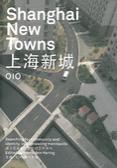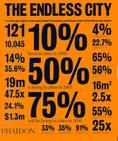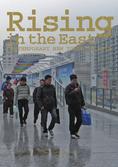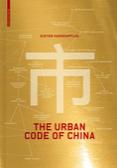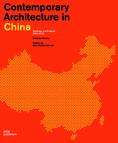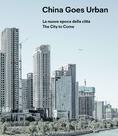industrial sites networks housing economics welfare mobility central places scali ferroviari sustainability waterfronts & harbors governance urban practices transport & logistics technology premio tesi di laurea landscapes Environment adi resilience energy land use social exclusion/integration immigration urban policies premio letteratura urbanistica
Shanghai New Towns
Searching for community and identity
in a sprawling metropolis
Harry den Hartog (edited by)
Since the 1980s the built-up area of Shanghai has spread out rapidly with large-scale urban development. Each year the diameter of the city has increased in lenght by an average of one kilometer and it continuous expanding outward like a sphere. Since the mid-1980s Shangai's Urban Planning Bureau has been studying and adapting the city's spatial structure.
Since 2000, Shanghai has emphasized rural development, which is a strategic and influential step for the future of urban development.
"One city. Nine Towns" was a pilot project that tried to coordinate the development between the urban and the rural (...). The Planning Conference in 2006 determined the 1-9-6-6 vision for the urban struscuture - namely 1 central cuty, 9 new cities, 60 new towns, and 600 central villages. This new concept with a central city and secondary cities has been deepened and developed further. The plan covers the entire 6340 square kilometers of the city.
Shanghai is speeding up the contruction of new towns on the basis of the original 1-9-6-6 urban system in order to ease the population pressure in the central city, to rationally plan the urban spatial structure, to promote industrial development, and to enhance urban quality and the level of urbanization.
Since 2009 Shanghai Urban Planning and Land Resources Administration has started researching the planning strategy of the new towns in order to focus on suburbs, to co-ordinate urban and rural areas, and to speed up the development of rural urbanization.
From the Book Preface, by Zheng Shiling
CONTENTS
Preface. Visions on the Urban Development of Shangai
by ZhengShiling
Urbanization of the Countryside
by Harry den Hartog
From Agricolture China to Urban China
by Jiang Jun
Shangai as Urban Experiment
by Harry den Hartog
PILOT CITIES AND TOWNS
Quartiers (less than 50.000 inhabitants)
• Anting New Town (Shanghai International Automobile City, Jiarding District)
• Fengjing New Town (Jinshan District)
• Holland Village (Gaoqiao Nwe Town, Pudong District)
• Thames Town (Songjiang District)
New Towns (50.000 - 500.000 inhabitants)
• Chengqiao New Town (Chongming Country)
• Luodian New Town (Minhang District)
New CIties (500.000 - 1.000.000 inhabitants)
• Dongtan Eco-City (Chingming Country)
• Lingang New Harbour City (Pudong District)
• Qingpu New City (Qingpu District)
Building in China
by Harry den Hartog
Heterotopias: Themed Spaces in Shanghai and Los Angeles
by Li Xiangning
New Town Models: Planning Sameness and Difference in Hong Kong and Shanghai
by Laurence Liauw Wie Wu
PHOTO ESSAY
Urban Fictions, by Richard Rowland
Urban Development and Management in Songjiang New City
by Zhou Jing
Tracing the Politics of Space in One City & Nine Towns
by Marijin Nieuwenhius
The Re-Imagination of the Chinese City
by Mari Fujita
PHOTO ESSAY
New Citizens, Chen Taiming
Searching for Community and Identity
by Harry den Hartog
The Sprawling Metropolis, Out of Control?
by Harry den Hartog
Glossary
Biographies
Colophon
ABOUT THE EDITOR:
Harry den Hartog is an urban designer and critic. In 2004 he founded the firm Urban Language. Urban Language researches developments like urban-rural relationships, urbanization, shrink, public space, globalisation. In his book Exurbia - living outside the city he researched the ex-urbanization of the Dutch countryside. He lives and works half in Shanghai and half in Rotterdam.
OTHER AUTHORS:
Chen Taiming, Mari Fujita, Zhou Jing, Marijin Nieuwenhius, Li Xiangning, Laurence Liauw Wie Wu, Richard Rowland, ZhengShiling, Jiang Jun
Online resources and links




Planum
The Journal of Urbanism
ISSN 1723-0993
owned by
Istituto Nazionale di Urbanistica
published by
Planum Association
ISSN 1723-0993 | Registered at Court of Rome 4/12/2001, num. 514/2001
Web site realized by ChannelWeb & Planum Association | Powered by BEdita 3
